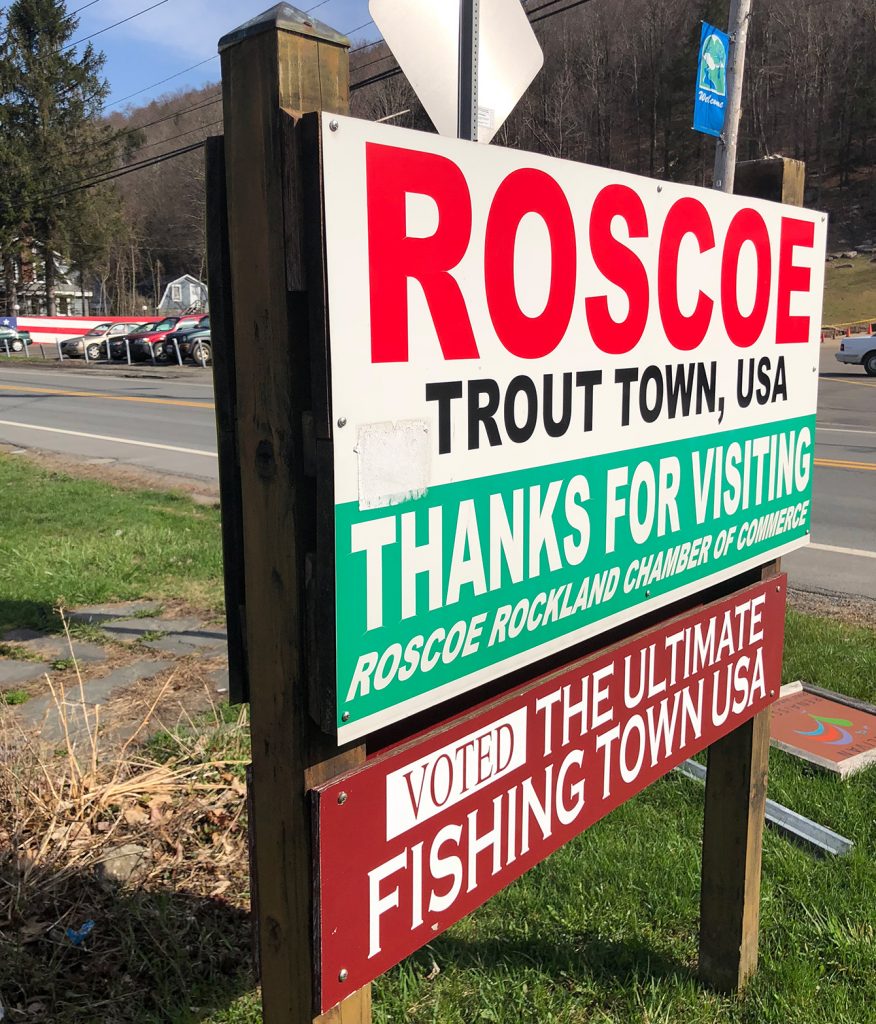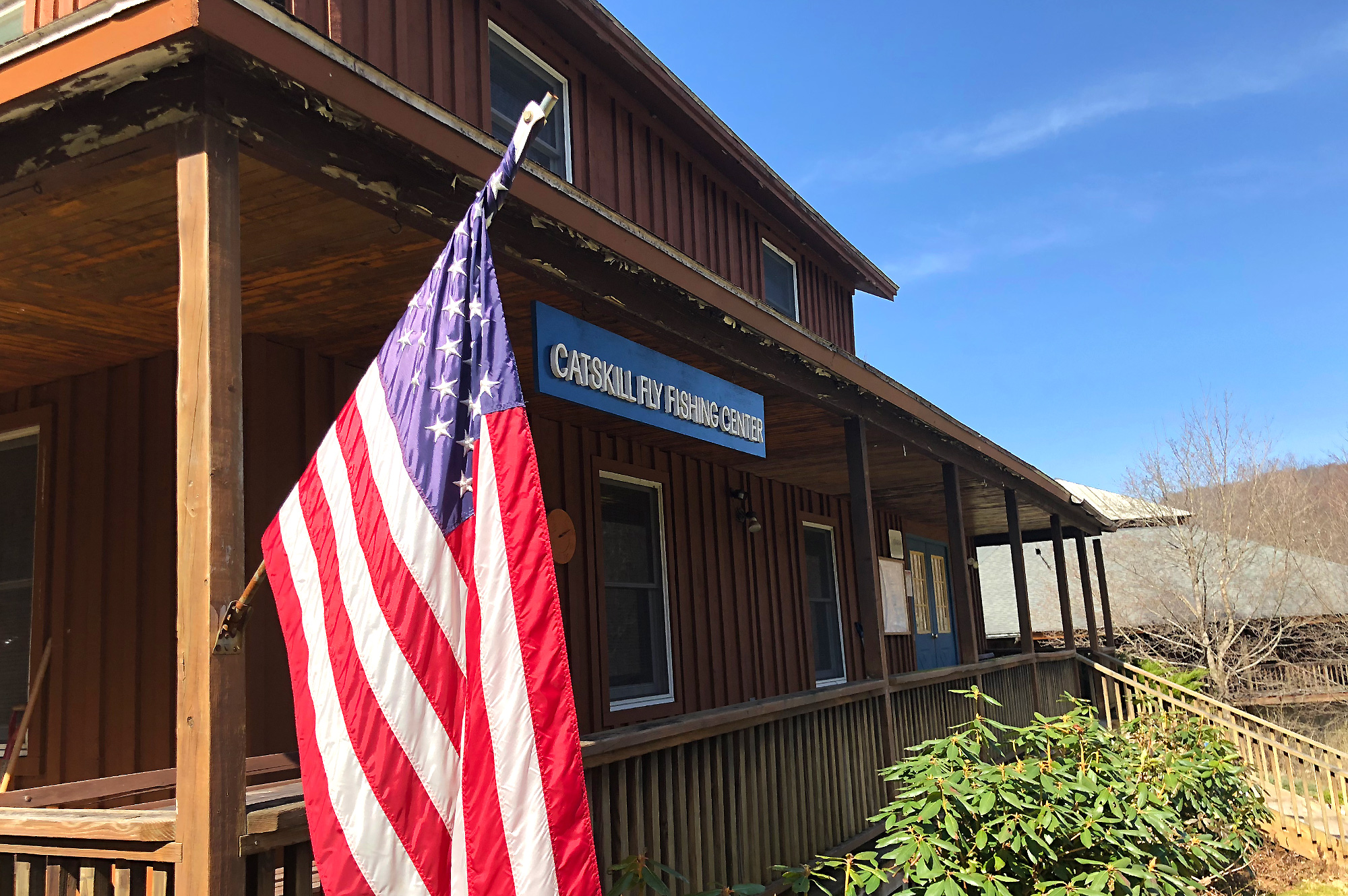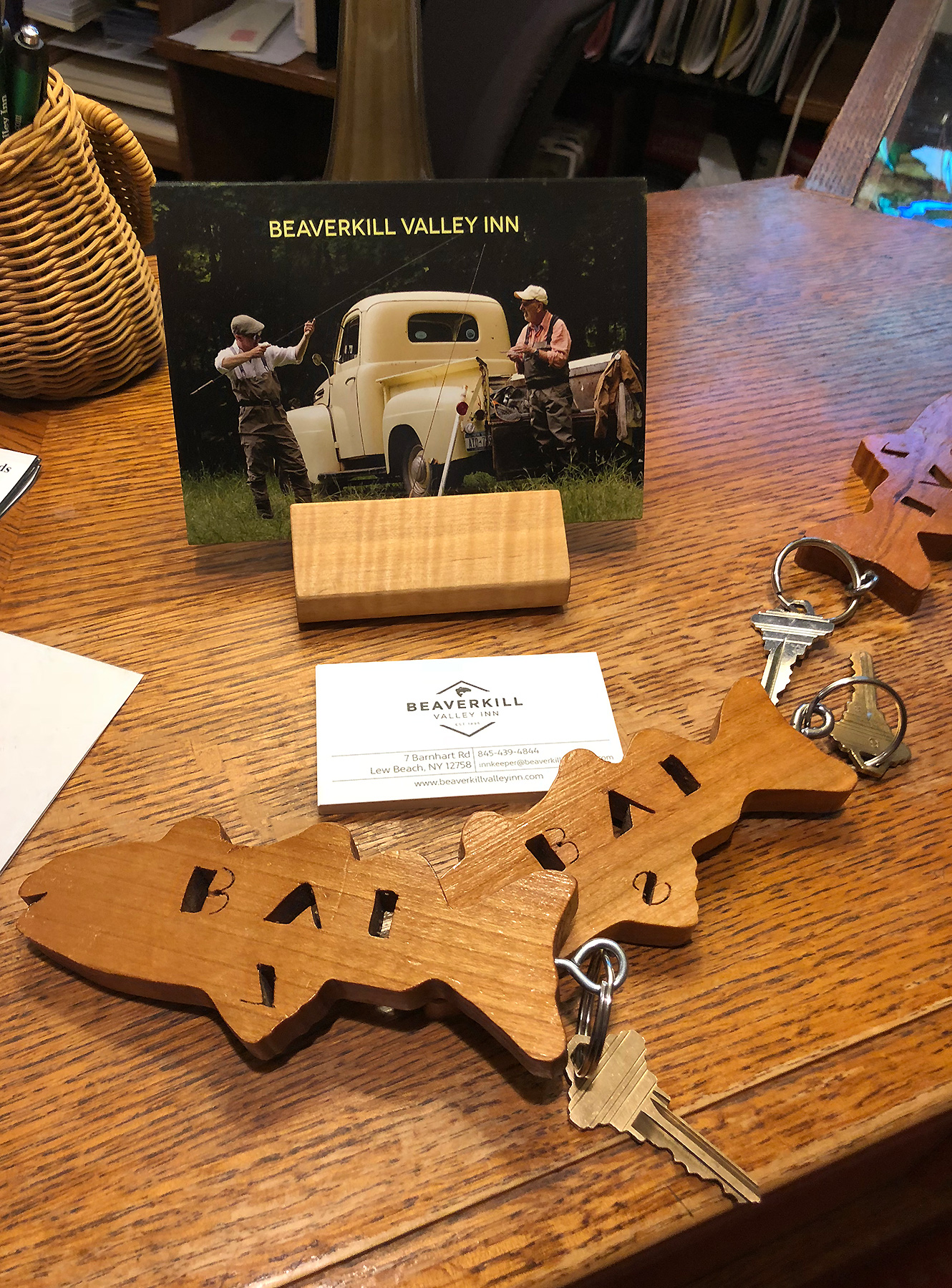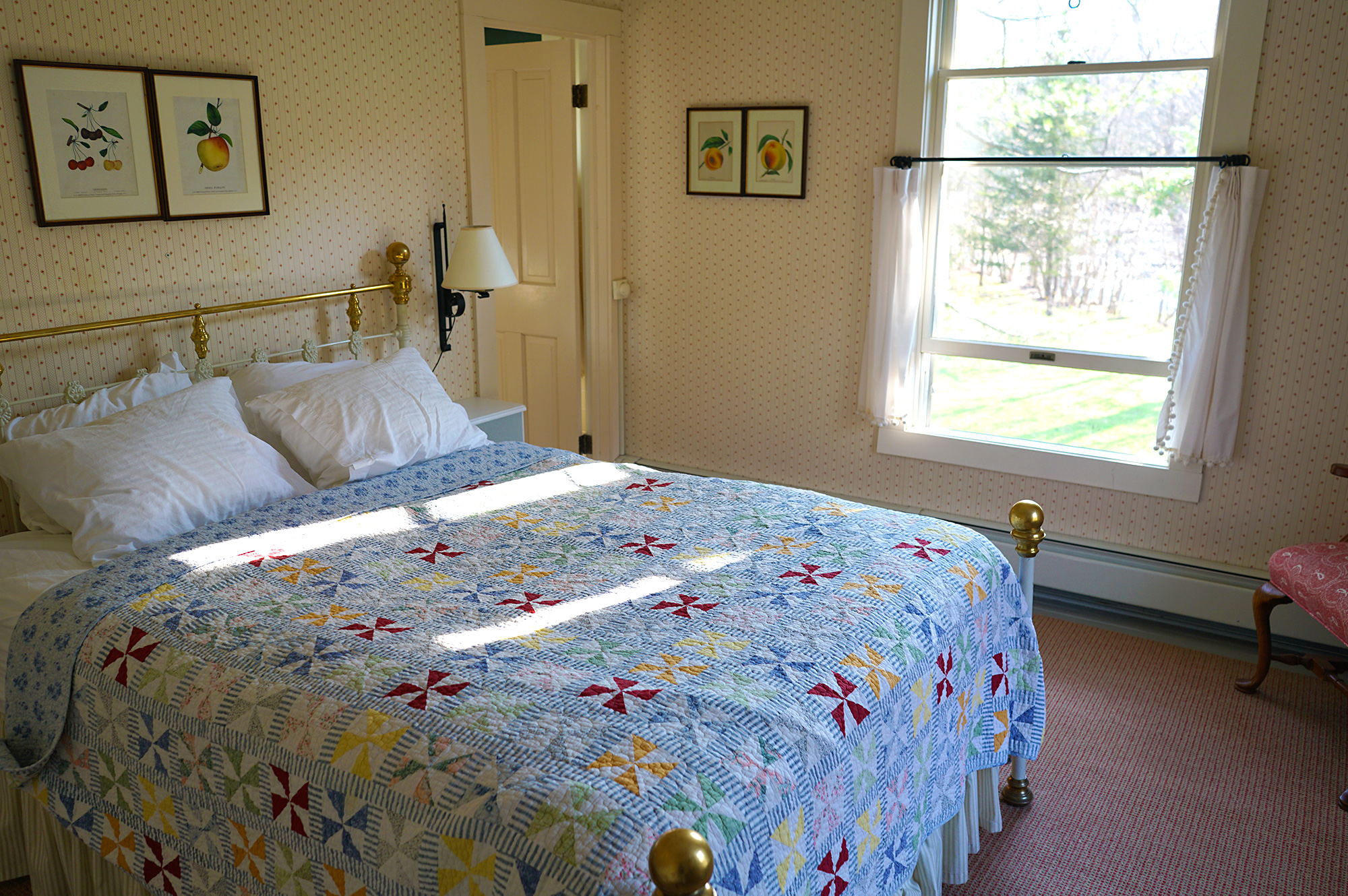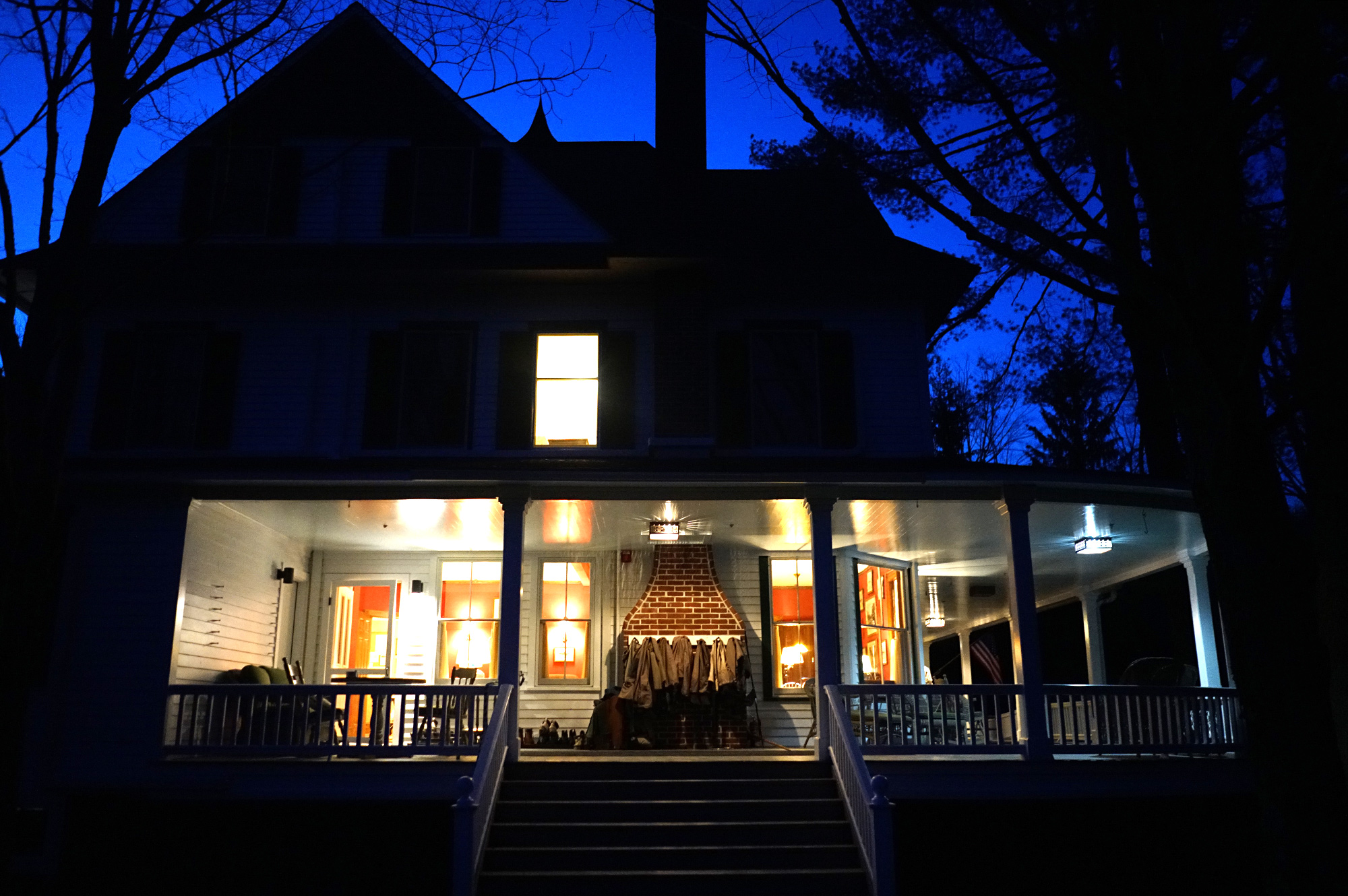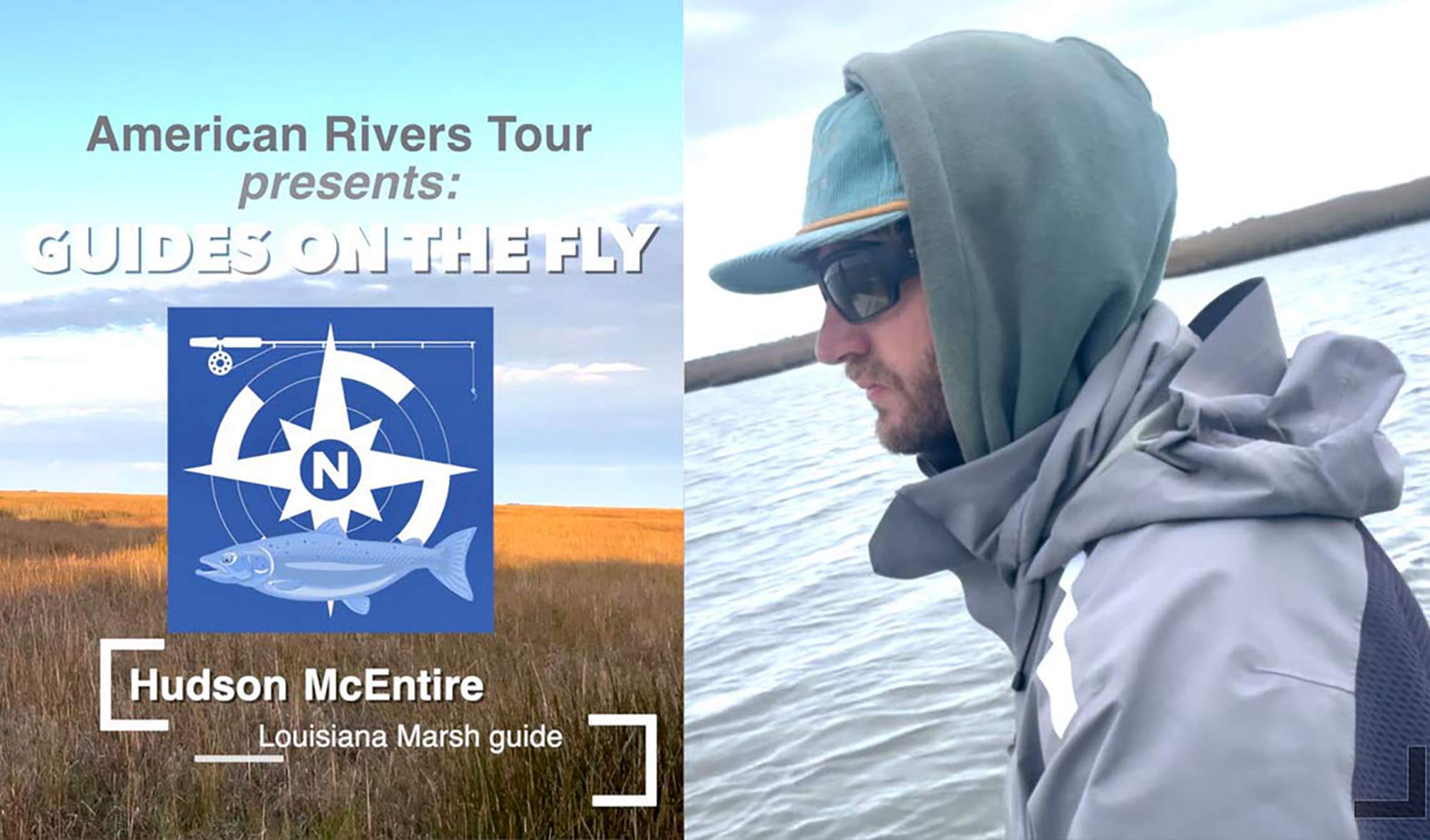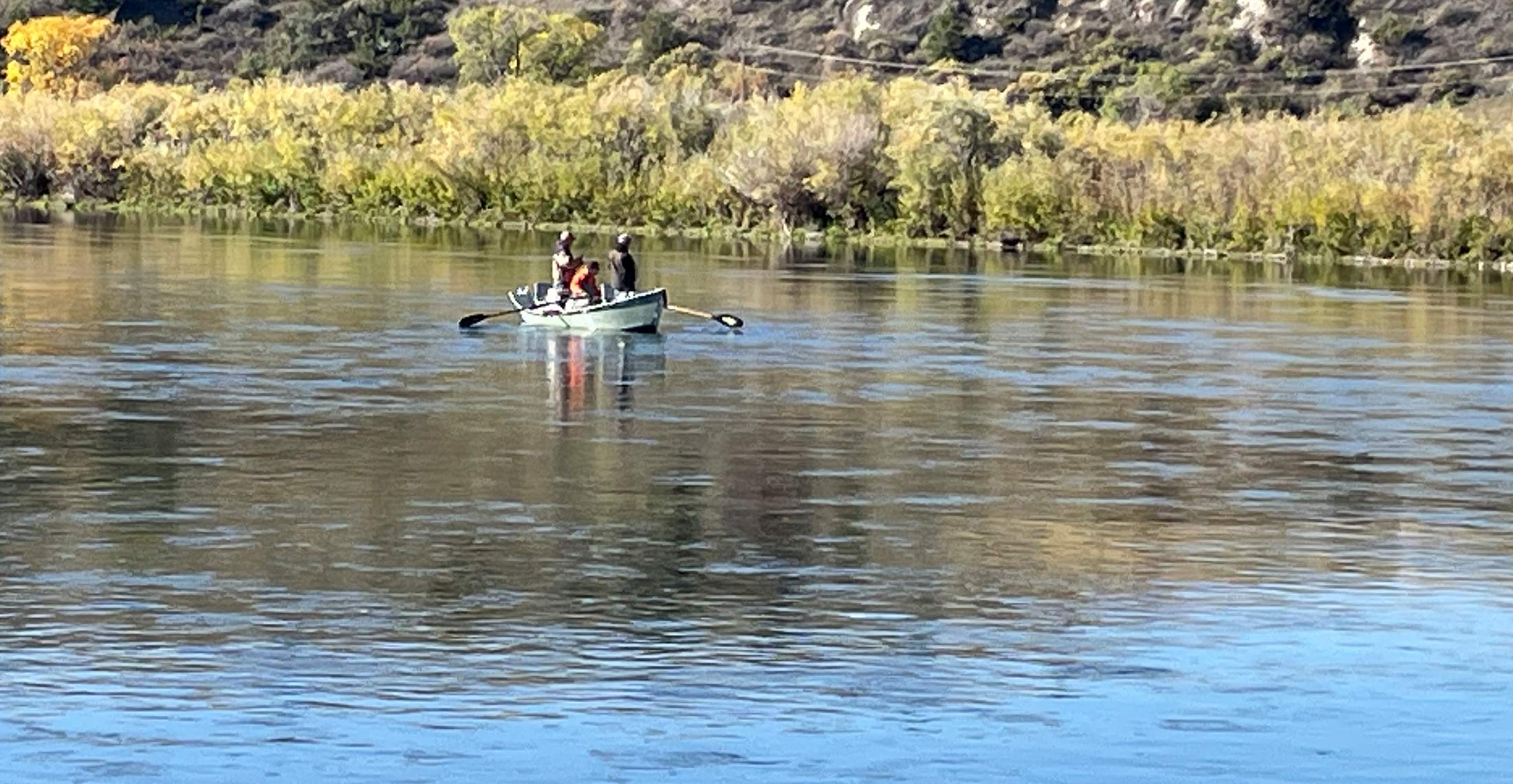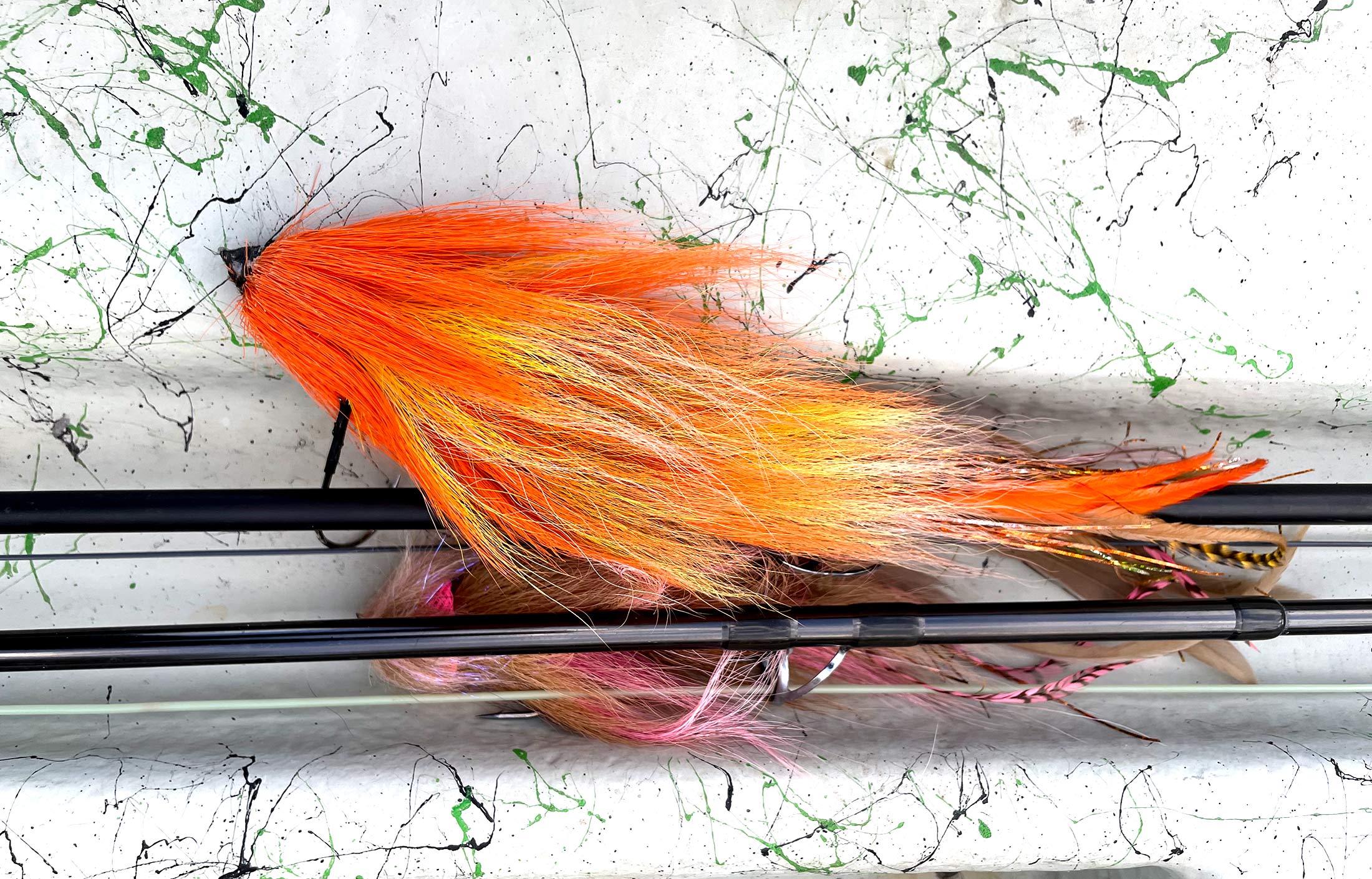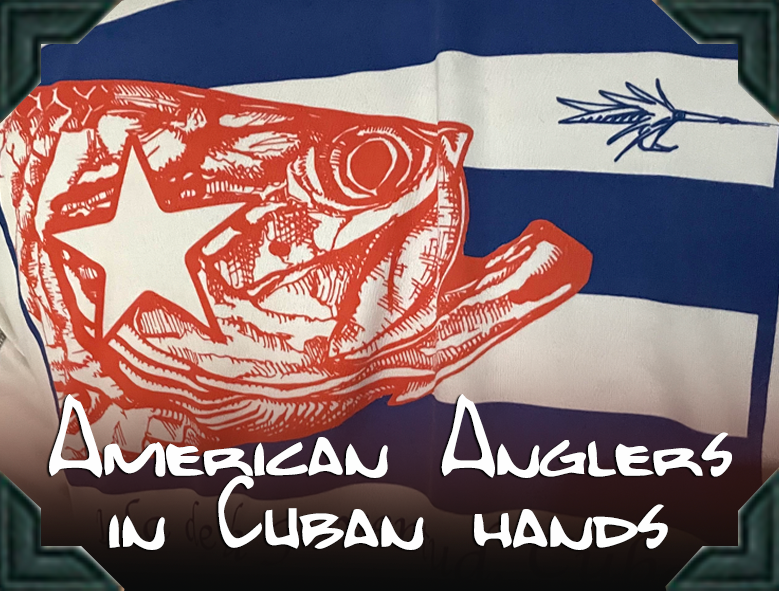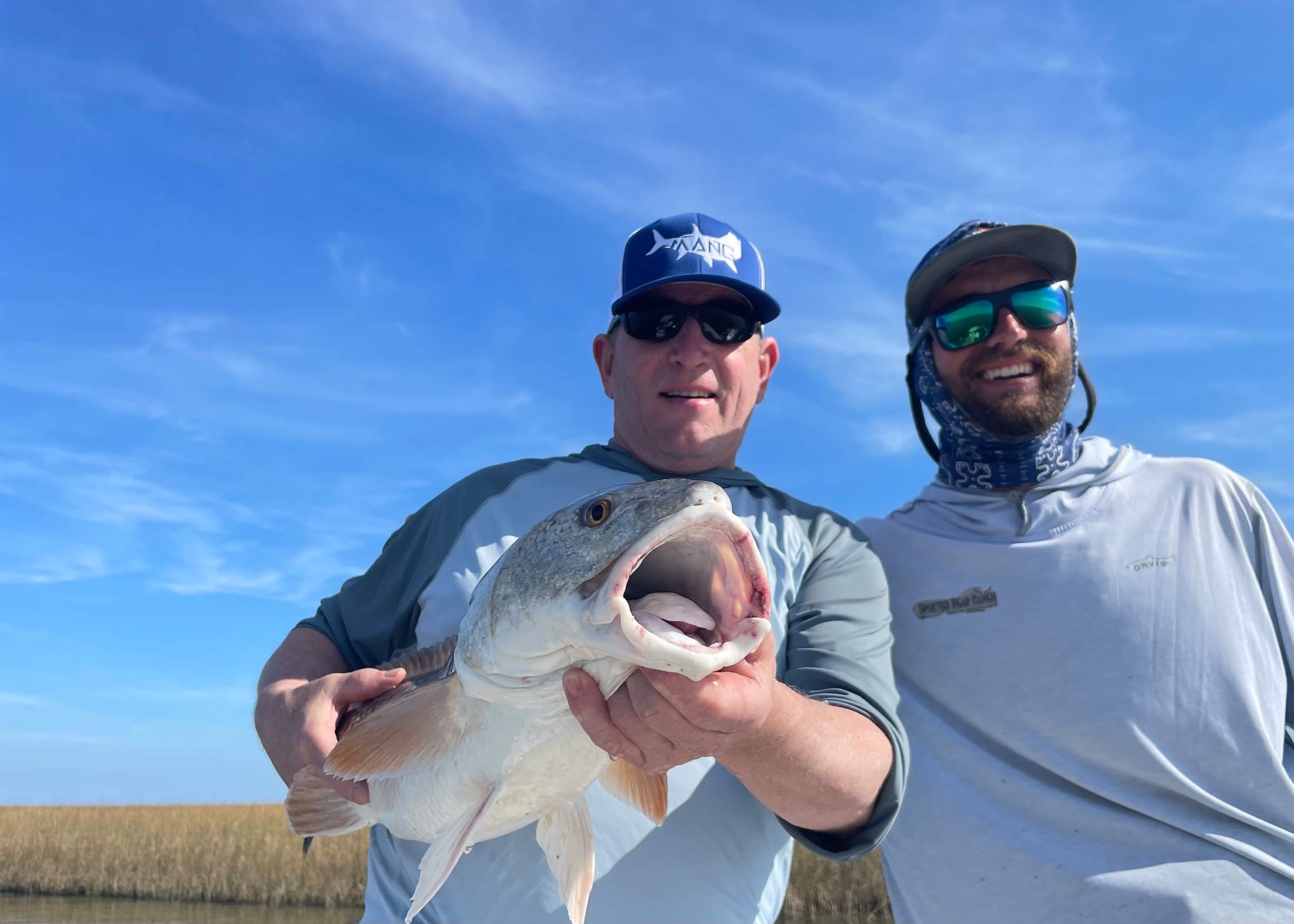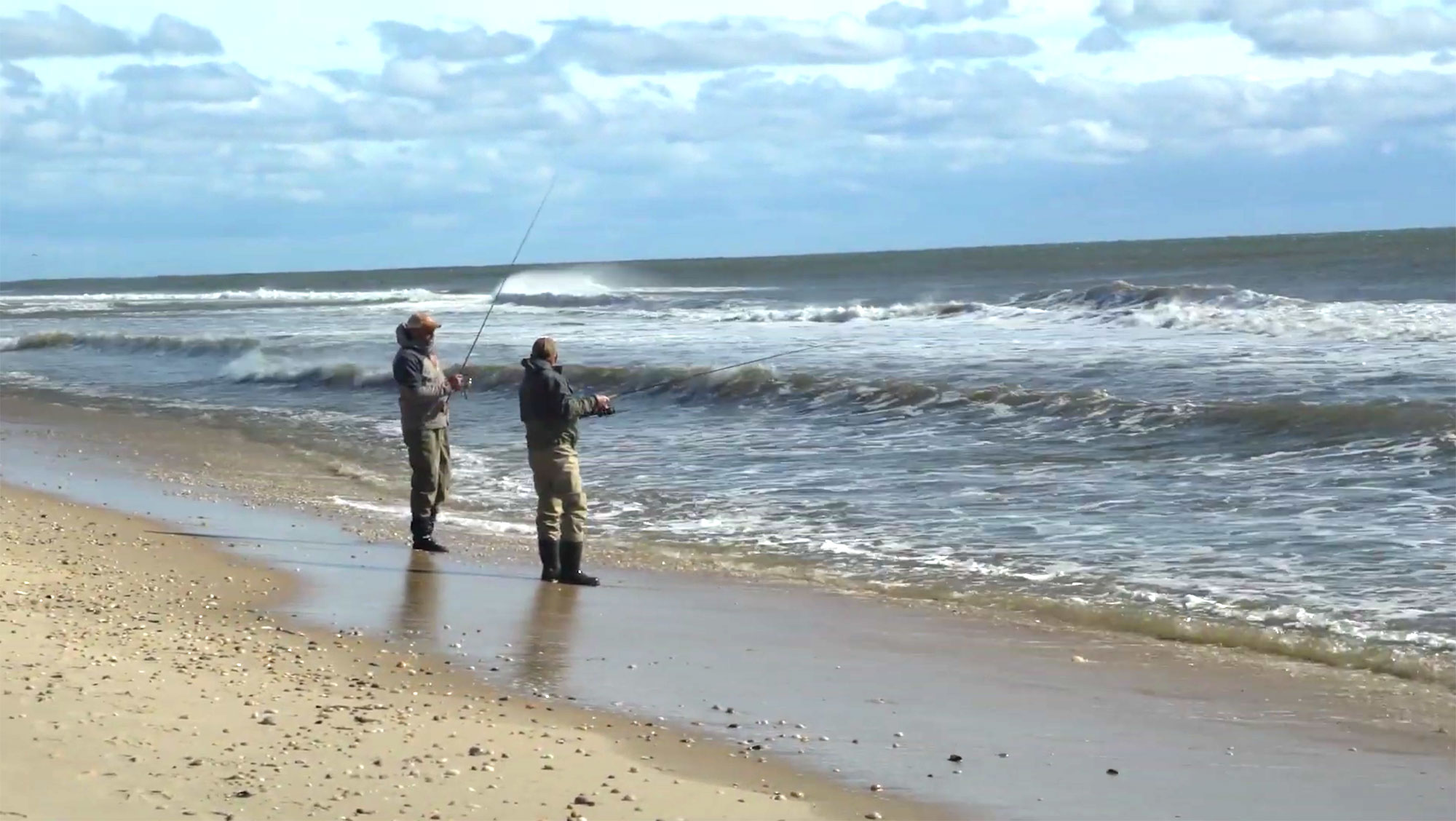Pulling into Roscoe, New York off Highway 17 West might seem like any old pit stop to most folks. There’s a Mobil gas station and a diner at the end of the exit ramp. On further inspection, after taking a left and driving 2 blocks to the center of town, one quickly realizes that this is more than a sleepy, dusty old neighborhood. It’s actually Trout Town USA.
To the left you’ll see an Orvis guide shop called Beaverkill Angler, on the corner, easy to find. Across the street is a fly tying shop called Catskill Flies where the owner sat at his tying desk near the door. Busy tying, he barely looked up and made eye contact. I heard him ask “you boys fishing today?” as he remained focused on the task at hand.
Down the street, near Casey’s coffee shop we found another haven for fishermen – Baxter House Outfitters – where the sign says closed but the door is open. We found a nice blend of friendly chatter and high tech fly fishing gear on hand for the needy visitor short on leaders, flies, or advice. It might be a dusty old town, perhaps, but what a treat to find 3 vibrant fly shops full of anticipation for the afternoons mayfly hatch. That’s a joy for this American fisherman.
After gathering our first pieces of information in Roscoe, we headed east to the Catskills Fly Fishing Center & Museum where luck provided an introduction with Nick Rubicco, a fly fishing guide who had a few free days available. Not only did he introduce us to the museum and it’s walk of fame, Nick shared tales of building his professional base. He learned from the likes of Lefty Kreh, Bob Popovich, Joan & Lee Wolff and Roscoe fly tiers Winnie & Mary Dette – all fly fishing luminaries recognized with other greats like Kurt Goudy and Zane Grey on the plaques. The museum offers trout bums and fly tiers a perfect introduction to the history of American dry fly fishing from the early days when bamboo rods and hand tied bugs were the only avenue to the sport we now know and love.
After our tour, Nick escorted us up to the BVI (local slang for the Beaverkill Valley Inn), where we checked in. Our room key provided access to the Inn’s private stretch of river on the Upper Beaverkill river, a picturesque one mile flow filled with rainbow, brown and brook trout. After settling into #8 a river view room on the corner of the century old Inn’s second floor, I walked around and took in the majestic fishing lodge, imagining what my grandfather would have thought of the place when he visited back in the ‘50s. While it is immaculate and well maintained, in style and design not much has changed.
As I came across room #21 my own childhood came flooding back. This is the type of Inn that families roll into for a week in the summer. They yearn to get away from life in the city, far from TV and the internet, and spend family time in the woods. For me room #21 represented sanctuary, a spot that my Dad might have requested for me, likely the smallest room at the Inn where I could be sequestered away from my sisters and the rest of the guests. A small spot where a young boy can dream and realize the first steps toward navigating life alone, on the 3rd floor, safe but out of eye shot and sound from the rest of the family. On this trip, the mid-week visit in early May was very calm and peaceful. There were just a few fishermen and no kids in sight.
An iconic American institution, the Beaverkill Valley Inn offers its guests an opportunity to slow down and step back in time to a slower pace, an option that seems to be slipping away from American life. There is no TV and in the morning at the BVI’s main dining room, guests are welcomed to a communal breakfast made by sweet, caring women who have been preparing breakfast here for over 30 years, fortifying guests for their days adventure. Feeling the subtle creak of wood floors beneath your feet adds to the authenticity of the BVI experience. As I put my head on the pillow in room 8 after a long day of fishing, I listened to the river outside the window and drifted back to my youth, sleeping on my grandfather’s porch in small town, USA. It’s nice to know that places like this still exist and that the community in Lew Beach, NY, down this lonely stretch of road in the Catskills have come together to protect this dignified Inn for future generations.

